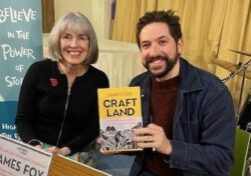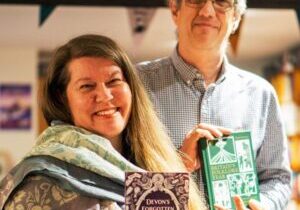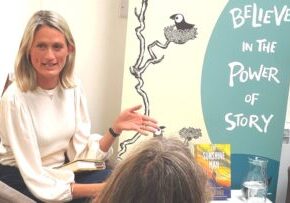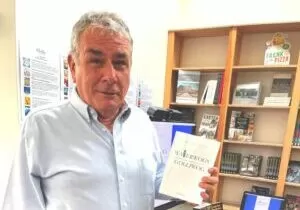FEATURES
Robert Burns: Poetry, Songs and Values
January 25, 2019 | Blog > Features > Robert Burns: Poetry, Songs and Values
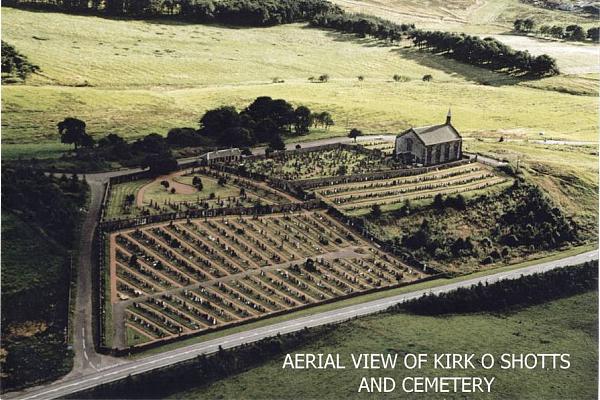
Robert Burns (1759-1796), a well-known Scottish poet and lyricist, has given us many much-loved texts: ‘Auld Lang Syne’, ‘A Red, Red Rose’ and ‘A Man’s A Man for A’ That’ to name but a few. Writing in both Scots and English, his poetry and songs are read and studied around the world. He became a Scottish cultural icon and an inspiration to the founders of liberalism and socialism. This Burns’ Night, we’ve gathered a few favourites from Rabbie Burns’ canon chosen by people in the CCB community – just a few wee hours awa’ from Ayreshire!
John Anderson my jo, John
John Anderson my jo, John,
When we were first acquent,
Your locks were like the raven,
Your bonie brow was brent;
But now your brow is beld, John,
Your locks are like the snaw,
but blessings on your frosty pow,
John Anderson, my jo!
John Anderson my jo, John,
We clamb the hill the gither,
And monie a cantie day, John,
We’ve had wi’ ane anither;
Now we maun totter down, John,
And hand in hand we’ll go,
And sleep the gither at the foot,
John Anderson, my jo!
Chosen by Robert Logan
Robert Burns is renowned for his love poems, but this poem is probably best known as a song. A rather bawdy version exists as well as this one, in which a wife regrets the romantic failings of her ageing husband! This version, like the sequence in the film Up where we see the whole of the Fredricksen’s life together in fleeting moments of inspired storytelling, documents in the simplest of sentences the shared life of a couple and their relationship over a lifetime. It is spare in its use of language, poignant and succinct, but, in the end, what more really needs to be said? The imagery of life being a clamber uphill followed by the inevitability of a careful descent is masterful and it also sits comfortably within the love affair the Scots and Irish have for the beautiful melancholic…let’s celebrate life but let’s not forget to celebrate death. Listen to Eddie Readers’ rendition…it is simply the best.
Tam o’ Shanter
Read the poem here (with the translation too)!
Driving along the M8, you can see Kirk o’ Shotts parish church (pictured above) – the perfect setting for Tam o’ Shanter. An epic poem displaying the drunken classes of Alloway, Tam o’ Shanter has endearing and comical characters, a gallant horse and some beautifully clever lines. The narrative poem tells of a night of drink, witches, warlocks and the Devil. Full of humour and social commentary, Tam o’ Shanter is an unforgettable poem that balances finely between the supernatural and harrowing realism.
To a Mouse
Wee, sleekit, cowrin, tim’rous beastie,
O, what a panic’s in thy breastie!
Thou need na start awa sae hasty,
Wi’ bickering brattle!
I wad be laith to rin an’ chase thee,
Wi’ murdering pattle!
I’m truly sorry Man’s dominion
Has broken Nature’s social union,
An’ justifies that ill opinion
Which makes thee startle
At me, thy poor, earth-born companion
An’ fellow-mortal!
…
But Mousie, thou art no thy lane,
In proving foresight may be vain:
The best-laid schemes o’ Mice an’ Men
Gang aft agley,
An’ lea’e us nought but grief an’ pain,
For promis’d joy!
…
Read the full poem here.
Chosen by Hannah Smith
‘To a Mouse’ reveals Robert Burns’ compassion and intellect. When the poet comes across a scared, shivering mouse when ploughing out in the field, he gently apologises for the damage he’s caused to the mouse’s handiwork. He begins thinking out loud about the impact of people on nature. My favourite lines, full of inevitability, are the well-known: ‘The best-laid schemes o’ Mice an’ Men, Gang aft agley, An’ lea’e us nought but grief an’ pain, For promis’d joy!’ Burns ends the poem in jealousy of the mouse, despairing at the suffering caused by humans’ need to look backwards and forwards, not being able to simply live in the present.
‘To a Mouse’ is often connected with Adam Smith’s The Theory of Moral Sentiments (1759), if you fancy a bit of further reading! Burn’s regret at breaking ‘Nature’s social union’ reflects Smith’s notion that all creatures are bound together through benevolent exchange.
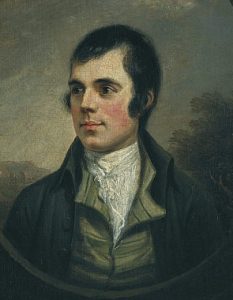
January 25, 2019
Blog > Features > Robert Burns: Poetry, Songs and Values


